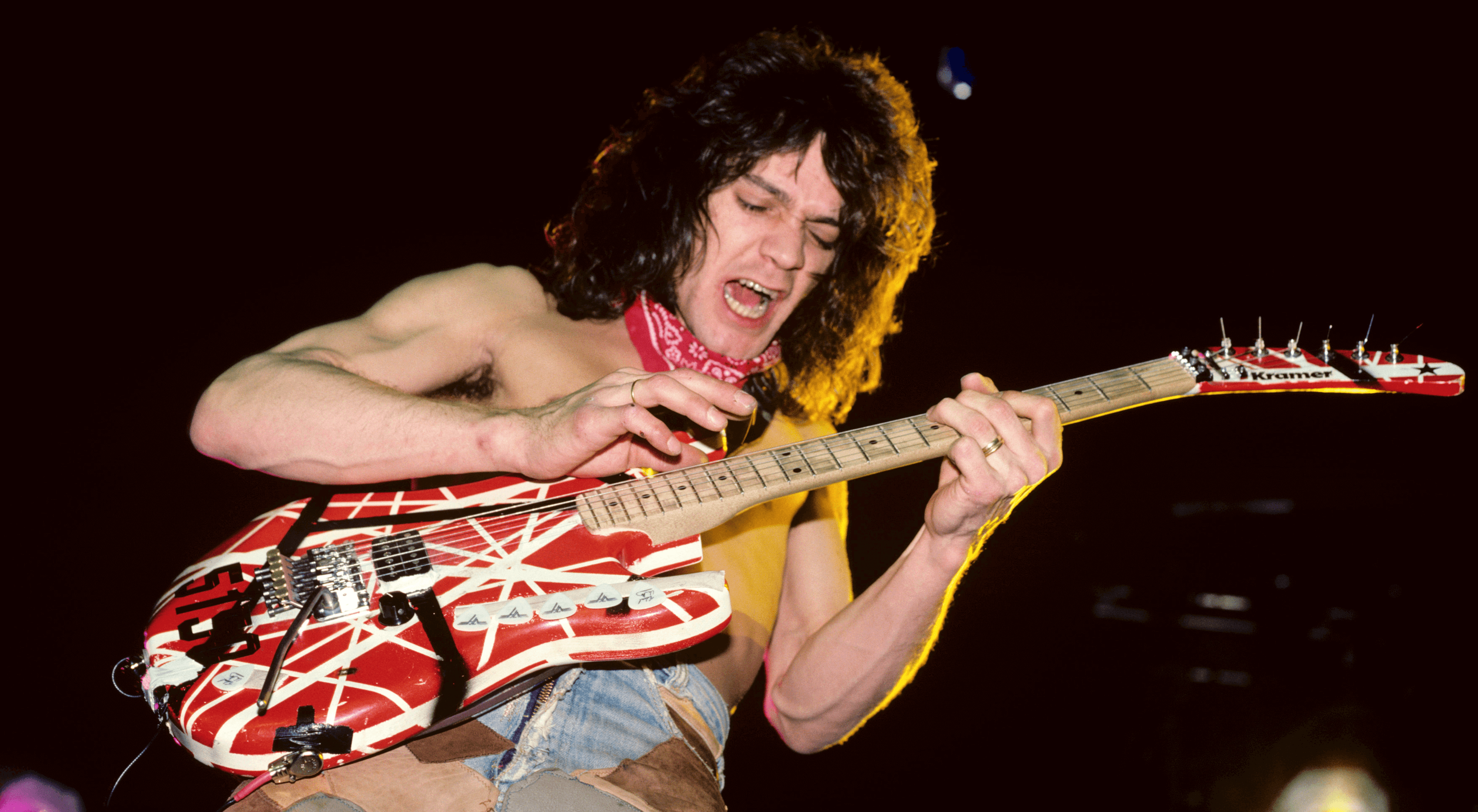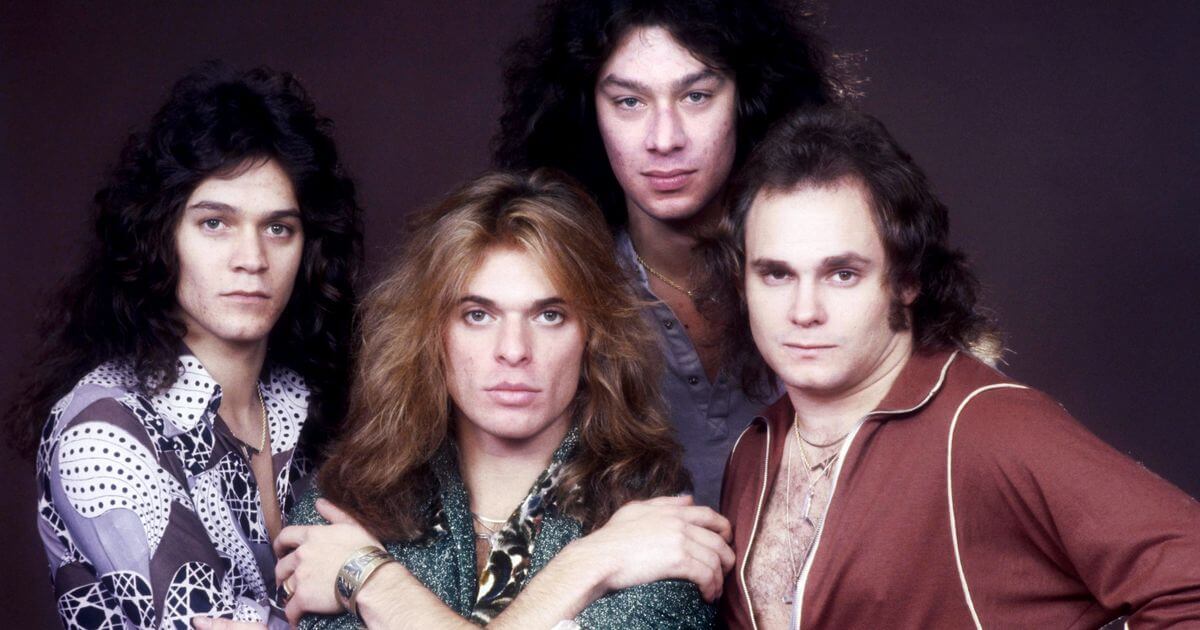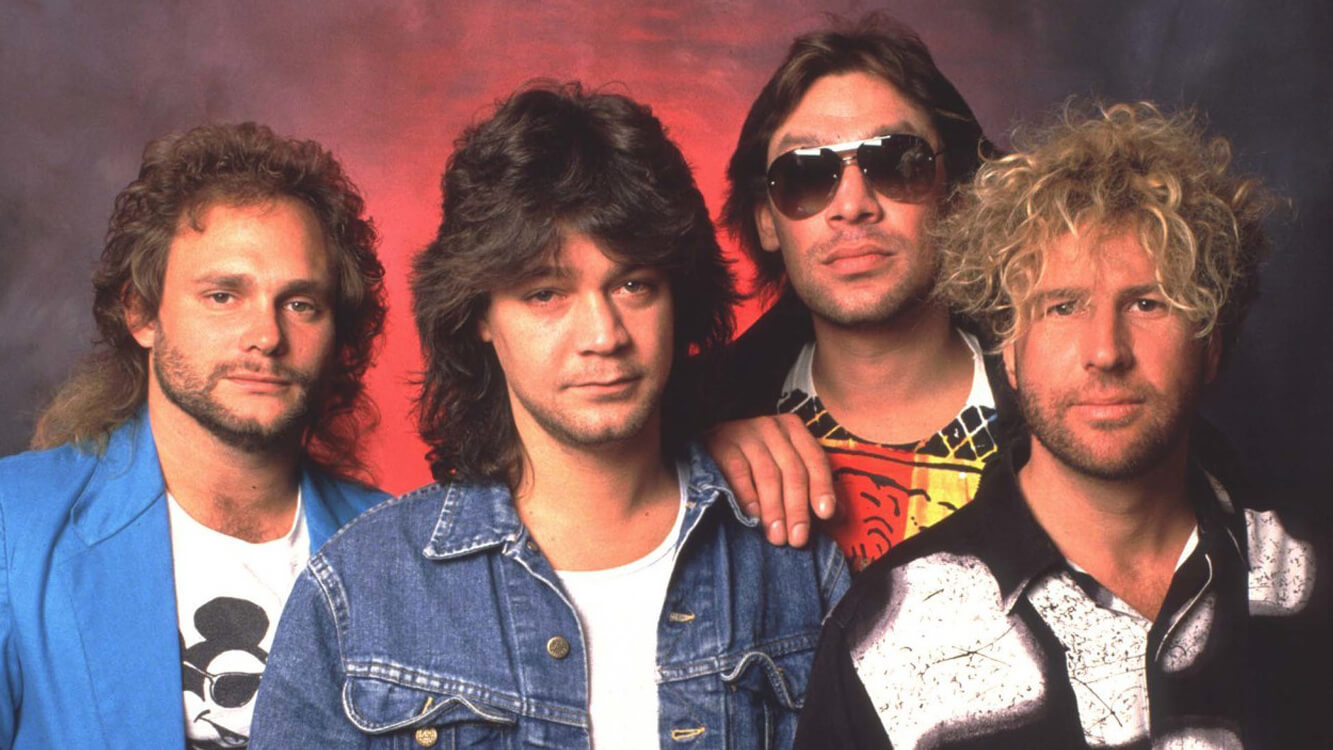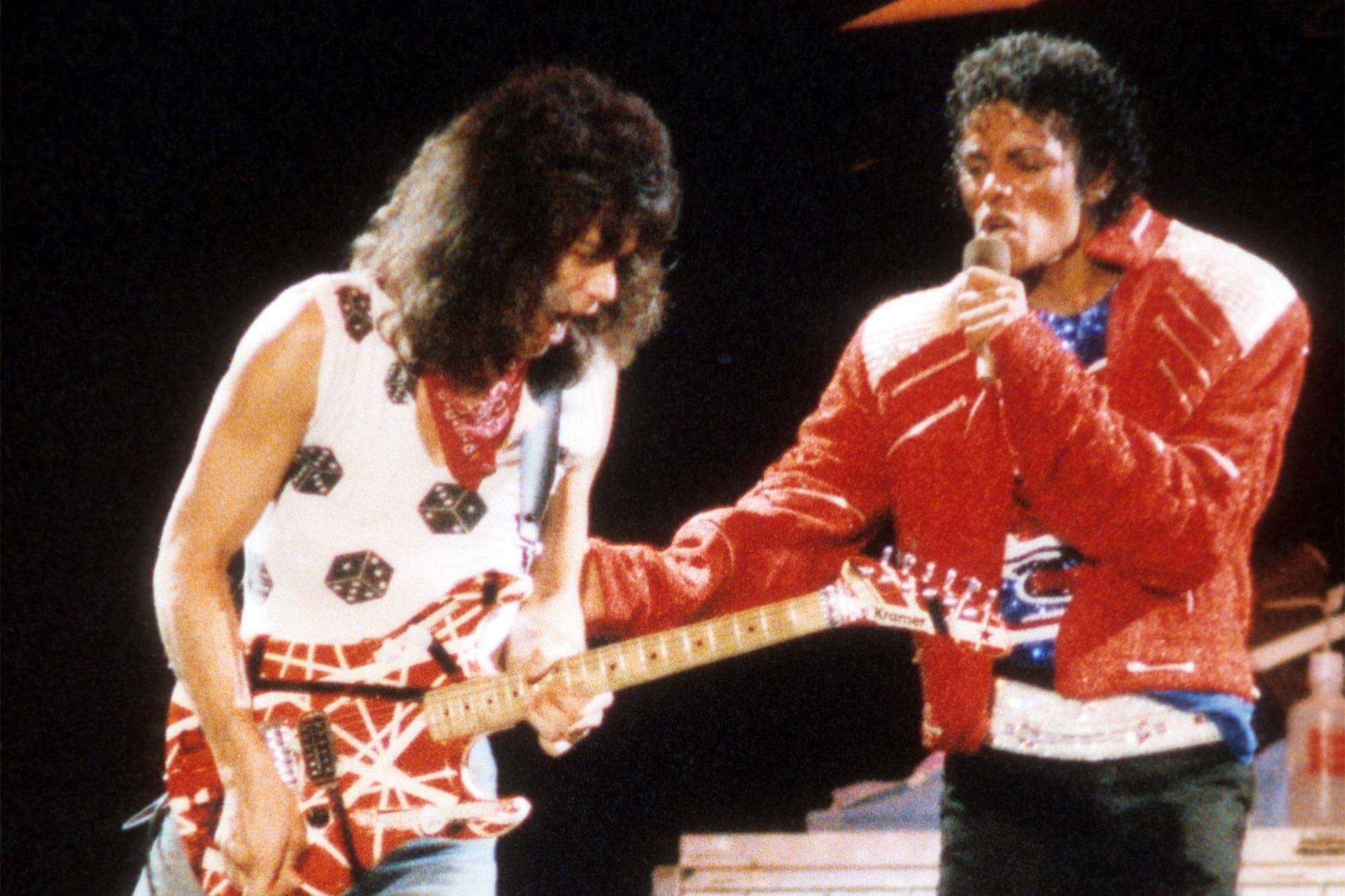Eddie Van Halen (1955 – 2020)
Blog > Eddie Van Halen (1955 – 2020)

Written by Mark Stock
Posted November 19, 2020
The music world lost a legend in Eddie Van Halen earlier this year. It’s one of countless losses chalked up to 2020, a year that simply takes and takes, but this death resonates, from sprawling rock sections of record stores to suburban garages where kids look to pick up a guitar for the first time.
Nowadays, it’s easy to throw the rock star title at just about anybody—or anything—with chops. But Eddie personified and even helped define the role, a deft guitarist who, like an outlaw, always played hard and fast. Our ears are still ringing from his tireless and seemingly frenetic stage presence.
Eddie was the principle songwriter and lead guitarist for Van Halen, a California hard rock band that grabbed the genre by the nape in the early 70s and never really stopped shaking it. The band, which included Eddie’s brother on drums, managed to expertly marry the classic rock era it came up in with the big hair fuzz and glam metal that followed. Van Halen’s remarkable first two albums dropped within a span of a little more than a year and immediately immortalized the act.
Many associate Van Halen with a revolving door of front men, namely the party-starting, always-howling David Lee Roth. Eddie was Van Halen’s Jimmy Page, a virtuoso who was overshadowed by his animated lead singer more than he ought have been. It makes sense, as Eddie’s mesmerizing, fast-draw guitar work deserved an equally dynamic voice (if you're not convinced, just listen to this vocal isolation of David Lee Roth). But anybody with a halfway decent musical palate knows Eddie was the sizzling spine of the band.

He’s most famous for “Eruption,” a song that blasts the fog machine and turns the spotlight fully on the guitarist. It sounds like the plugged-in work of a modern Bach, complex, unapologetic and show-stealing. But Eddie’s sonic resume is endless, from the towering intro riff to “Ain’t Talkin’ ‘Bout Love” to the toothy hook of “Little Dreamer.” It’s all the more amazing from a guy who never learned to read music, as he told Rolling Stone in 1980.
Eddie popularized the tapping method, which involves both hands essentially drumming on the fretboard of the guitar. It allows for pacy finger work and blistering solos. Watching Eddie cut loose on “Mean Street” in 1998 in Australia, you can practically see the smoke billowing from the neck of his guitar. Such firebrand carried Van Halen for decades, landing the band in the Rock and Roll Hall of Fame in 2007.
Born in Amsterdam in 1955, Eddie was the son of a multi-instrumentalist who had a thing for jazz and classical music. He and his family landed in Pasadena in the early 60s and started to sponge up the local scene, listening to and mimicking bands like the Surfaris. Before long, the band assembled, logging sets at strip clubs and any other venue that would say yes.
In between playing covers, Van Halen wrote its own material and gradually built up a hard rock stockpile. By 1978, the act was more than ready to release its self-titled freshman record, one that continues to sound like the work of a dialed-in band well, well into its career. Extensive touring and countless hits followed, bursting from subpar speakers in Ford Escorts and inspiring the Steve Vai’s, Joe Satriani’s and Slash’s of the circuit, among many others.

More great records followed, from Fair Warning in 1981 to OU812 in 1988. The band continued, in various incarnations, well into the new millennium with Eddie commanding the stage throughout. Van Halen never quite managed to recreate the magic of its first decade together but was incredibly successful nonetheless. As of last year, the group is estimated to have sold more than 80 million albums worldwide.
So, as we look back on Eddie’s role in the American rock circuit, it’s hard to call it anything but massive. The band had its own iconic logo (the angelic initials that look they would make a great hood ornament), a telltale sign that you made it. Eddie will forever be remembered for his infectious energy, let alone skillful noodling. Just as basketball conjures up the branded silhouette of Michael Jordan skying for a dunk, hard rock can be summed up by Eddie in midair, his self-made Frankenstrat guitar in hand, legs kicking either way.

No, he didn’t sexualize the electric guitar, that had already been done by folks like Jimi Hendrix. No, he didn’t even invent the tapping technique, as Flamenco guitarists had been doing it for generations. Instead, Eddie mastered everything we associate with the stereotypical guitar god. He was wildly talented, emotive and high-octane and did it all while jumping from stacks of amps and effortlessly bouncing across the stage.
Nowadays, it’s easy to throw the rock star title at just about anybody—or anything—with chops. But Eddie personified and even helped define the role, a deft guitarist who, like an outlaw, always played hard and fast. Our ears are still ringing from his tireless and seemingly frenetic stage presence.
Eddie was the principle songwriter and lead guitarist for Van Halen, a California hard rock band that grabbed the genre by the nape in the early 70s and never really stopped shaking it. The band, which included Eddie’s brother on drums, managed to expertly marry the classic rock era it came up in with the big hair fuzz and glam metal that followed. Van Halen’s remarkable first two albums dropped within a span of a little more than a year and immediately immortalized the act.
Many associate Van Halen with a revolving door of front men, namely the party-starting, always-howling David Lee Roth. Eddie was Van Halen’s Jimmy Page, a virtuoso who was overshadowed by his animated lead singer more than he ought have been. It makes sense, as Eddie’s mesmerizing, fast-draw guitar work deserved an equally dynamic voice (if you're not convinced, just listen to this vocal isolation of David Lee Roth). But anybody with a halfway decent musical palate knows Eddie was the sizzling spine of the band.

He’s most famous for “Eruption,” a song that blasts the fog machine and turns the spotlight fully on the guitarist. It sounds like the plugged-in work of a modern Bach, complex, unapologetic and show-stealing. But Eddie’s sonic resume is endless, from the towering intro riff to “Ain’t Talkin’ ‘Bout Love” to the toothy hook of “Little Dreamer.” It’s all the more amazing from a guy who never learned to read music, as he told Rolling Stone in 1980.
Eddie popularized the tapping method, which involves both hands essentially drumming on the fretboard of the guitar. It allows for pacy finger work and blistering solos. Watching Eddie cut loose on “Mean Street” in 1998 in Australia, you can practically see the smoke billowing from the neck of his guitar. Such firebrand carried Van Halen for decades, landing the band in the Rock and Roll Hall of Fame in 2007.
Born in Amsterdam in 1955, Eddie was the son of a multi-instrumentalist who had a thing for jazz and classical music. He and his family landed in Pasadena in the early 60s and started to sponge up the local scene, listening to and mimicking bands like the Surfaris. Before long, the band assembled, logging sets at strip clubs and any other venue that would say yes.
In between playing covers, Van Halen wrote its own material and gradually built up a hard rock stockpile. By 1978, the act was more than ready to release its self-titled freshman record, one that continues to sound like the work of a dialed-in band well, well into its career. Extensive touring and countless hits followed, bursting from subpar speakers in Ford Escorts and inspiring the Steve Vai’s, Joe Satriani’s and Slash’s of the circuit, among many others.

More great records followed, from Fair Warning in 1981 to OU812 in 1988. The band continued, in various incarnations, well into the new millennium with Eddie commanding the stage throughout. Van Halen never quite managed to recreate the magic of its first decade together but was incredibly successful nonetheless. As of last year, the group is estimated to have sold more than 80 million albums worldwide.
So, as we look back on Eddie’s role in the American rock circuit, it’s hard to call it anything but massive. The band had its own iconic logo (the angelic initials that look they would make a great hood ornament), a telltale sign that you made it. Eddie will forever be remembered for his infectious energy, let alone skillful noodling. Just as basketball conjures up the branded silhouette of Michael Jordan skying for a dunk, hard rock can be summed up by Eddie in midair, his self-made Frankenstrat guitar in hand, legs kicking either way.

No, he didn’t sexualize the electric guitar, that had already been done by folks like Jimi Hendrix. No, he didn’t even invent the tapping technique, as Flamenco guitarists had been doing it for generations. Instead, Eddie mastered everything we associate with the stereotypical guitar god. He was wildly talented, emotive and high-octane and did it all while jumping from stacks of amps and effortlessly bouncing across the stage.



